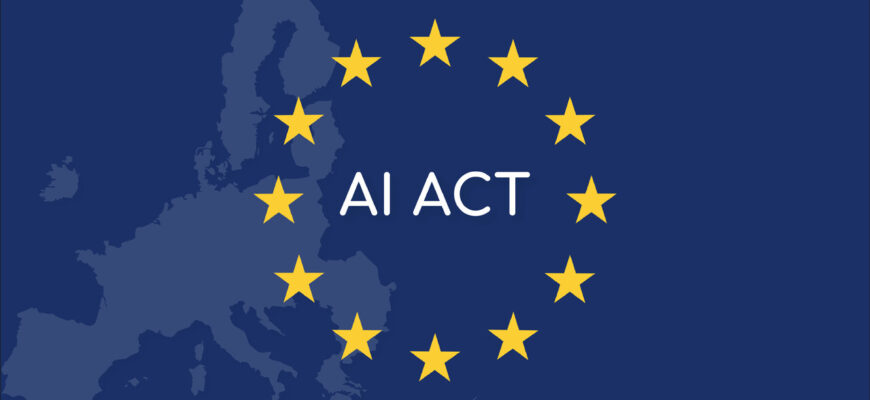Europe is rewriting the rulebook for artificial intelligence, and the consequences will ripple across business, law, and everyday life. Regulators are moving faster than many expected, crafting laws that try to tether a fast-moving technology to durable social values. The result is a distinctively European mix of precaution, rights protection, and enforceable obligations that other jurisdictions are watching closely.
- Why Europe took the lead
- The core of the EU approach: risk-based regulation
- The AI Act: essentials and obligations
- Prohibited practices and red lines
- Ethical foundations: rights, dignity, and accountability
- How the EU balances innovation and protection
- Practical compliance: what organizations must do
- Checklist for AI governance
- Risk categories at a glance
- Enforcement, penalties, and legal uncertainty
- International ripple effects
- Standards, certification, and the role of technical communities
- Case study from the field: implementing governance in a fintech
- Common pitfalls and how to avoid them
- What to watch next
Why Europe took the lead
European policymakers have long treated technology through the lens of public interest: privacy, non-discrimination, and human dignity sit at the center of decision-making. Decades of work on data protection and consumer rights created institutional experience and political appetite for more comprehensive AI rules.
There is also a strategic angle. As the U.S. emphasizes innovation and China emphasizes industrial deployment, the EU positions itself as a global standard-setter. A single market of 27 countries gives Brussels leverage: if a company wants access, it must comply.
The core of the EU approach: risk-based regulation
The European approach is built on the idea that not all AI systems are equally risky. Lawmakers have favored a tiered approach that ranges from minimal requirements for low-risk tools to strict prohibitions for certain uses that violate foundational rights.
This risk-based architecture aims to be proportionate: it concentrates regulatory burdens where harms are greatest, while avoiding stifling benign innovation. The framework forces developers and deployers to think carefully about context, impact, and safeguards.
The AI Act: essentials and obligations
The centerpiece of the regulatory package is a landmark law that defines obligations for providers, deployers, importers, and distributors of AI systems. It specifies duties such as risk assessment, documentation, human oversight, and transparency measures tailored to risk levels.
For high-risk systems—those affecting employment decisions, critical infrastructure, biometric identification, and healthcare, among others—the law requires conformity assessments and rigorous technical documentation. These systems must also implement mitigation measures to prevent discriminatory outcomes and ensure traceability.
Prohibited practices and red lines
Europe has drawn explicit red lines. Certain manipulative or mass-surveillance practices are prohibited outright. Systems that manipulate vulnerable groups or exploit minors are singled out as unacceptable, reflecting a rights-first stance.
These prohibitions are not merely symbolic: they establish clear limits on the kinds of AI commercialization that will be tolerated inside the EU. That clarity helps civil society and companies understand the boundary between acceptable and unacceptable systems.
Ethical foundations: rights, dignity, and accountability
European AI governance is unusually explicit about ethical foundations. Policies cite human dignity, fairness, privacy, and non-discrimination as core values that technology must respect. These are not optional principles but drivers of enforceable rules.
Accountability mechanisms are central: documentation requirements, mandatory impact assessments, and whistleblower protections converge to make it easier to detect, audit, and remediate harmful systems. Ethics is operationalized rather than left to voluntary codes.
How the EU balances innovation and protection
Balancing protection with innovation is the most delicate challenge. The EU has tried to preserve space for experimentation through regulatory sandboxes and lighter-touch measures for low-risk applications. Funding programs and standards work aim to support trustworthy innovation.
At the same time, the EU is realistic about trade-offs: stronger protections may slow some deployments. Policymakers accept that trade-off deliberately, arguing that sustainable innovation requires public trust and legal certainty.
Practical compliance: what organizations must do
Compliance is operational: companies must inventory AI systems, classify risk, conduct impact assessments, and create technical documentation. Governance requires cross-functional teams—legal, product, engineering, and compliance—to work together in new ways.
Smaller organizations face particular strain because documentation and conformity assessments can be resource-intensive. The EU has provisions intended to ease burdens for SMEs, but many startups will still need practical support to meet the standards without slowing development drastically.
Checklist for AI governance
The following list outlines pragmatic steps organizations should take now to align with European rules.
- Catalog AI systems and map data flows.
- Perform AI-specific impact assessments for high-risk use cases.
- Establish human oversight and incident response plans.
- Maintain technical documentation and logs to support audits.
- Engage with external conformity assessors as required.
Risk categories at a glance
To make obligations clearer, here is a concise table summarizing typical regulatory requirements by risk category.
| Risk level | Examples | Typical obligations |
|---|---|---|
| Low | Spam filters, simple chatbots | Transparency, voluntary best practices |
| High | Recruitment tools, loan approval systems | Impact assessments, documentation, conformity checks |
| Unacceptable | Social scoring, untargeted mass surveillance | Prohibition |
Enforcement, penalties, and legal uncertainty
Enforcement mechanisms are robust: national regulators across member states will have the authority to impose fines and corrective measures. Penalties scale with the severity of breaches and can reach significant sums for noncompliance in high-risk areas.
Despite the clarity in many areas, some legal uncertainty remains. Questions about definitions, borderline cases, and interactions with national laws will require interpretation by courts and regulators, creating a period of legal testing and adjustment.
International ripple effects
European rules do not stay in Europe. Much like the GDPR reshaped global privacy practices, the EU’s AI rules are likely to influence multinational companies and other jurisdictions crafting their own regimes. Compliance often becomes a de facto global standard.
At the same time, the EU faces geopolitical complexity. Differences in regulatory philosophy—especially with the U.S. and China—raise questions about cross-border data flows, enforcement cooperation, and the competitiveness of regulatory regimes.
Standards, certification, and the role of technical communities
Technical standards and certification schemes are a crucial complement to legislation. Standards bodies, academic researchers, and industry consortia are working to define metrics for robustness, fairness, and transparency that regulators can reference.
These technical efforts help turn high-level obligations into measurable checkpoints. They also provide a market for third-party conformity assessors and audit tools that firms will rely on to demonstrate compliance.
Case study from the field: implementing governance in a fintech
Working with a European fintech, I helped build an AI governance program that balanced speed with compliance. The team began with a rapid inventory of models and prioritized those tied to credit decisions as high risk.
We introduced model documentation templates, regular bias testing pipelines, and a governance board with legal and product owners. The result: the company maintained agile product cycles while reducing regulatory surprise and improving decision explainability for customers.
Common pitfalls and how to avoid them
One frequent mistake is treating compliance as a one-off checkbox rather than an ongoing process. AI systems evolve; so should governance processes, with periodic reassessments and continuous monitoring baked into product lifecycles.
Another pitfall is siloed responsibility. Successful programs assign clear ownership and create routine reporting channels between engineers, privacy teams, and legal counsel. This alignment shortens response times when audits or incidents occur.
What to watch next
Key developments to monitor include final interpretations by national regulators, the emergence of certification schemes, and court decisions that clarify ambiguous terms. Each will shape how strictly obligations are enforced and which practices become routine.
Technological trends also matter. Improvements in explainability tools, detection algorithms for bias, and secure data-sharing methods will change the calculus for compliance and may ease burdens on developers.
The European approach to AI governance is ambitious and imperfect, but it is reshaping how organizations design and deploy intelligent systems. By centering rights and accountability, Europe forces a reckoning that will influence both law and engineering culture.
If you want deeper practical guides and analysis on this topic, visit https://themors.com/ and explore our other materials.









